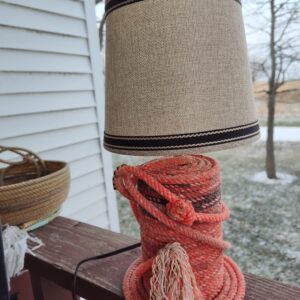Learning to Macramé: A Journey of Knots, Creativity, and Patience
There’s something magical about taking simple materials—just a few cords and your hands—and transforming them into something functional and beautiful. That’s exactly what macramé offers. This centuries-old craft of knotting has seen a resurgence in recent years, with wall hangings, plant hangers, and even bags adorning Instagram feeds and craft fairs. But while macramé might look effortless in photos, learning it is an entirely different story.
When I decided to learn macramé, I was drawn by the promise of a calming, meditative hobby that would also result in tangible creations.
Starting with the Basics: Knots and More Knots
Macramé begins with the most basic tool: knots. To the uninitiated, they might seem intimidating, but each knot has its own rhythm and purpose. I started with the essentials: the lark’s head knot (used to attach cords), the square knot (a foundational element in most designs), and the half-hitch knot (perfect for creating decorative patterns).
Watching tutorials online and following patterns felt like learning a new language. My first attempts were far from perfect—cords tangled, knots tightened unevenly, and patterns looked nothing like the elegant designs I had envisioned. But there was something deeply satisfying about the process, even when I had to unravel a row and start over.
The Joy of the Learning Curve
Macramé isn’t just about making something pretty; it’s about slowing down. In our fast-paced, screen-driven world, taking the time to focus on a single, tactile activity felt like a breath of fresh air. With every knot, I found myself entering a kind of flow state, where the stress of the day melted away, replaced by the soothing repetition of weaving cords.
Tools of the Trade
One of the joys of macramé is its simplicity. You don’t need a huge investment to get started. Here’s what I used for my first projects:
- Cotton Cord: Soft and versatile, cotton cord is a beginner-friendly material.
- Wooden Dowels or Rings: These serve as anchors for your creations.
- Scissors: A sharp pair is essential for clean cuts.
- Measuring Tape: Precision is key in macramé, especially for larger projects.
Optional tools, like a macramé board or comb, can make the process smoother, but they’re not strictly necessary when you’re starting out.
Why You Should Try Macramé
Whether you’re looking for a creative outlet, a relaxing hobby, or a way to make personalized gifts, macramé is worth a try. It’s accessible to beginners, yet offers endless opportunities for growth as you tackle more complex designs. Plus, there’s something deeply fulfilling about creating something functional and beautiful from a few simple materials.
So grab some cord, find a tutorial, and give it a go. Start small—a keychain or a basic plant hanger—and see where your knotting journey takes you. Who knows? You might just fall in love with the art of macramé, just like I did.




